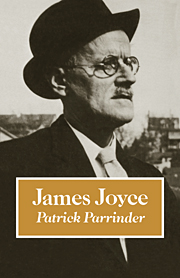Book contents
- Frontmatter
- Contents
- Preface and acknowledgements
- References to Joyce's works
- 1 Introduction: Joyce and the grotesque
- PART I
- PART II
- 5 A Dublin Peer Gynt
- 6 Stephen in Ulysses: the loveliest mummer
- 7 Bloom and Molly: the bourgeois utopians
- 8 The styles of Ulysses
- 9 The ultimate symbol
- PART III
- PART IV
- Notes
- Guide to further reading
- Index
5 - A Dublin Peer Gynt
Published online by Cambridge University Press: 15 September 2009
- Frontmatter
- Contents
- Preface and acknowledgements
- References to Joyce's works
- 1 Introduction: Joyce and the grotesque
- PART I
- PART II
- 5 A Dublin Peer Gynt
- 6 Stephen in Ulysses: the loveliest mummer
- 7 Bloom and Molly: the bourgeois utopians
- 8 The styles of Ulysses
- 9 The ultimate symbol
- PART III
- PART IV
- Notes
- Guide to further reading
- Index
Summary
Joyce first thought of the title ‘Ulysses’ in 1906, when he was projecting a number of additional stories for Dubliners. One of these was to recount a day in the life of a peripatetic Dublin Jew, Alfred Hunter. The other stories – ‘The Last Supper’, ‘The Street’, ‘Vengeance’, ‘At Bay’ and ‘Catharsis’ – were never written. ‘Ulysses’ nearly met a similar fate. Early in 1907 Joyce was regretting that it ‘never got any forrader than the title’. A few months later he thought of working it up into a short book, which, as he told Stanislaus, would be a ‘Dublin “Peer Gynt” ’. Stanislaus added the following pregnant comment in his diary: ‘I suggested that he should make a comedy out of it, but he won't’.
The social world of Ulysses is continuous with the social world of Dubliners. Several characters reappear and Bloom himself, we are told, attended the funeral of the unhappy Mrs Sinico. Yet the crucial steps Joyce took in planning Ulysses were not so much his initial choice of Homer's Odyssey as a model, as his successive decisions to expand it in the Peer Gynt manner and then to join it with a sequel to the story of Stephen Dedalus – all the while preserving a time-span limited to a single day. Ulysses, that is, began as a complex hybrid, a union of the classical epic, the autobiographical novel, the modern short story and a picaresque poetic drama.
- Type
- Chapter
- Information
- James Joyce , pp. 115 - 126Publisher: Cambridge University PressPrint publication year: 1984

